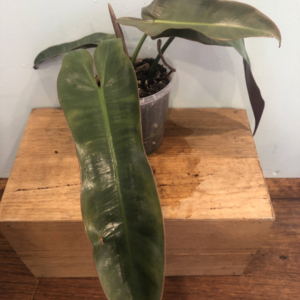
Oxalis triangularis, commonly known as the purple shamrock or false shamrock, is a popular houseplant appreciated for its attractive foliage and delicate pinkish-purple flowers. Here are the ideal growing conditions for Oxalis triangularis as a houseplant:
- Light: Oxalis triangularis prefers moderate to high light levels but should be protected from direct sunlight, especially during the hottest part of the day. Placing the plant near a window so it can see the sky is usually ideal.
- Temperature: This plant prefers moderate temperatures ranging between 15°C and 24°C. Avoid exposing it to extreme heat or cold drafts. Keep in mind that cooler temperatures, around 10°C during the winter months may induce dormancy.
- Humidity: Oxalis triangularis appreciates moderate humidity levels. Aim for humidity levels around 60-70%. Most households will hold at least 50% humidity. It’s always best to know what your humidity levels are – don’t just guess or assume that it’s high or low. You gotta know. Use a humidity monitor or hygrometer. Do not attempt to increase humidity by misting the leaves. This just makes the leaves wet and lets them stay wet creating a prime breeding place for fungal diseases. Another problem is that the mist isn’t the gaseous form of water that a plant can use – it’s just fine water droplets. The plant can’t take up water droplets. It can only take up moisture through its leaves that comes as a gas = humidity. Avoid placing it near air-conditioning vents or heaters, which can reduce humidity.
- Watering: It’s important to strike a balance with watering. Keep the soil slightly moist but not overly saturated. Ensure proper drainage to prevent waterlogging, as excessive moisture can lead to root rot.
- Soil: Well-draining soil is essential for Oxalis triangularis. A mixture of peat moss, perlite, and regular potting mix for houseplants works well. Good drainage prevents waterlogged conditions and promotes healthy root growth.
- Fertilization: Feed the plant with a balanced, water-soluble houseplant fertilizer once a month during the growing season (spring and summer). Follow the package instructions for dilution and application rates. Avoid over-fertilizing, as it can cause leaf burn or other nutrient imbalances.
- Dormancy: Depending on the conditions in which you keep this plant, Oxalis triangularis can go through a period of dormancy. During this time, which typically occurs in winter, the plant may shed its leaves. Reduce watering and resume regular care and watering when new growth appears in spring.
- Repotting: Oxalis triangularis may benefit from repotting every 1 to 2 years to provide fresh soil and room for growth. Choose a pot that is slightly larger than the current one, and perform repotting during the active growing season. Be very careful to disturb the roots as little at possible during repotting. Your plant may well express its displeasure at having its roots disturbed by allowing a lot of the foliage to collapse and wilt in a very dramatic fashion. Be patient, it will produce more leaves and revive in time.
By providing these optimal growing conditions, you can help ensure a healthy and thriving Oxalis triangularis houseplant. Remember to observe your plant closely and make any necessary adjustments based on its specific needs and responses.






